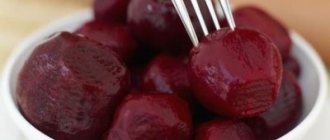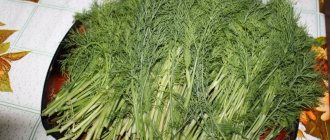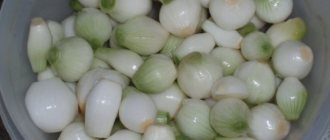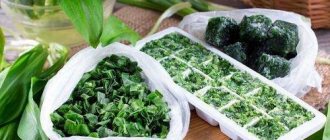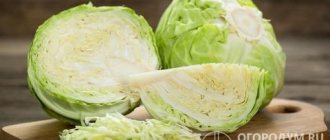Arugula is an annual plant of the cruciferous family; it is rich in beneficial substances that have a variety of positive effects on the body. To prevent greens from losing their healing properties, it is important to know how to keep arugula fresh for the winter. Useful tips collected in the article will help you preserve your grass until the next harvest.
Rucola has beneficial properties and a special piquant taste. To enjoy your greens all year round, make sure you prepare them in the summer.
What are the benefits of arugula?
Before you start harvesting the plant, it is worth studying the beneficial properties of the crop.
The plant includes:
- Microelements:
- copper;
- phosphorus;
- manganese;
- selenium;
- zinc.
- Macronutrients:
- calcium;
- magnesium;
- potassium;
- phosphorus;
- sodium.
- Vitamin complex: A, C, E, K, group B.
During the Roman Empire, the plant was considered a natural aphrodisiac. Due to the significant content of the above elements, the plant is considered a natural energy drink that increases performance. The culture is also saturated with iodine, which is important for residents of cities remote from the sea.
In addition, it is recommended to include the plant in food for:
- increasing hemoglobin levels;
- lowering cholesterol;
- improved digestion;
- combating cancer;
- normalization of water-salt balance;
- strengthening the nervous and cardiovascular system.
It is recommended to consume this beneficial herb for diabetes mellitus, kidney and urinary tract diseases, and for lactating women. Arugula is also low in calories and is an essential ingredient in many diets.
Contraindications
Arugula contains phytoncides, so greens can cause an allergic reaction. It is not recommended for use by people suffering from gastritis with a high level of acidity during an exacerbation.
Arugula negatively affects the human body if he has problems with the kidneys and liver. During pregnancy, women should also avoid aromatic arugula so as not to harm the unborn baby.
Storage Features
Having studied the benefits and possible harms of consuming the plant, the question arises: is it possible to harvest the healthiest arugula for future use? It is necessary to harvest grass. The main thing is to take into account several features of harvesting and storing the plant:
- You should not immediately purchase a large number of green bunches;
- freshly cut or purchased grass must be used immediately or stored in compliance with all requirements for no more than 4 days so that it does not have time to deteriorate;
- if you wrap the “tails” with cling film, you can increase the shelf life of fresh herbs by several days;
- store herbs on the bottom shelf of the refrigerator;
- It is optimal to place the bundles inside plastic or glass containers. In this way, the required temperature is achieved - 8-9 degrees;
- storage containers must be hermetically sealed with lids, as the grass quickly becomes saturated with other odors.
How to preserve arugula for the winter - ways
There are many ways to harvest healthy herbs, and each of them has its own advantages, features, and nuances. In this case, you can immediately select several storage options. For example, prepare one bunch with the addition of salt, dry the second, and freeze the third.
Regardless of whether arugula is stored dried or frozen, you should not use the product for food after a year.
How to store fresh arugula
The most convenient way to store fresh arugula is to place freshly cut bunches in small vases with water. Such preparations look impressive and allow you to preserve fresh green bunches for up to 5 days. You can extend the shelf life of the herb to 10 days by placing it in vases in the refrigerator.
But to enjoy always fresh and fragrant herbs, it is better to grow the crop in pots on the windowsill. Any soil is suitable for growing, and seeds can be easily selected in stores. In addition, the plant does not require special care, except for additional lighting in winter.
See also
How to properly freeze broccoli at home for the winter in the freezer
Read
Long-term storage of arugula
To ensure that the herb does not lose its beneficial properties over a long period of time, it must be properly prepared. The fastest and easiest option is freezing, a longer but reliable option is drying. But to keep the weed fresh for a long time, you can use the salt storage method as a basis.
Interesting! As a crop, arugula began to be grown about a hundred years ago. Before this, we collected the most useful leaves from a wild plant.
Storing arugula with salt
Using a simple pickling method, you can keep the herb fresh and spicy for six months. To do this you need to follow simple recommendations:
- Select freshly picked, green, young leaves.
- Rinse the greens under running water and place in a colander.
- Dry on cotton towels.
- Chop the arugula in a convenient way for later use.
- Pack the greens tightly into a glass jar, adding salt. Salt will need 1 tablespoon for every 100 grams of product.
- Tightly and securely screw the lid on the jar with the blank and transfer it to the refrigerator, cool cellar or pantry.
In this way, the plant will retain the maximum amount of nutrients, but the taste of the herb will change slightly.
Drying
Many housewives call drying the best way to prepare spices. Dried herbs cannot be added to a salad, but the herb is suitable as a spice for meat or fish dishes. You can dry the grass in several ways, discussed below. But it is important, at the end of the process itself, to pour the greens into a glass jar and seal it with a lid. To prevent dried arugula from spoiling, place a small cloth bag with salt inside the jar.
The natural way
To prepare arugula using the proposed method, you need to perform the following manipulations:
- Wash, sort and dry the greens.
- Chop the leaves.
Grass, when in contact with metal, tends to oxidize. Therefore, it is better not to use a knife or scissors for slicing, but to chop the greens with your hands.
- Wrap the baking sheet with parchment. Spread the herbs evenly in one layer on the baking sheet.
- Move the grass to a warm place, protected from direct sunlight.
- Dry the arugula for six to seven days, turning occasionally on the baking sheet.
- Pack the greens into jars.
Store the product for one year in a cool, dark place.
In the dryer
Using a special device for drying vegetables and fruits - an electric dryer, you can very quickly and conveniently prepare arugula for the winter. In addition, the plant will retain most of its healing properties.
You can make a blank in the following way:
- Prepare sorted, washed and dried leaves.
- Place the herb in the drying compartment.
- Set the appropriate mode. Some models are equipped with a special program for drying greens. The drying temperature should be 50 degrees. The duration of the process is 12 hours.
- During the drying process, the volume of greens will decrease by 12 times. Two kilograms of fresh herbs will yield only 162 grams of dried product.
- Transfer the herb into jars or fabric bags and store.
In the oven
You can dry greens in another simple way - in the oven. For this:
- Wash the leaves well and place them on a sieve. Blot the grass with a towel to remove excess moisture.
- Tear with your hands or cut into large sheets.
- Heat the oven to 40 degrees. Cover a baking sheet with parchment.
- Spread the greens onto the baking sheet in an even layer.
- Dry the workpiece and transfer it to containers for storing spices.
In this way, the time for preparing spices is halved compared to using an electric dryer.
In its purest form
Quick drying is necessary if the greens will be used for food within 4-5 days. To do this, the grass is washed thoroughly under running water, then torn into small pieces and laid out on towels (paper or cotton). After 30-40 minutes, when there are no drops of water left on the leaves, you can pack the green bunches into sealed bags. Store the preparation in the refrigerator.
Preparing for freezing
Freezing is the best way to extend the shelf life of medicinal herbs. How to prepare arugula leaves:
- Choose only healthy arugula leaves, without spots, preferably medium size.
- Be sure to rinse the greens from dust and dirt in warm water.
- Dry the arugula thoroughly before freezing. To speed up the process, place the leaves on a napkin or towel to absorb moisture. Excess water forms a coating of ice, and this spoils the appearance and taste of frozen arugula and other types of greens.
Advice If you grow arugula yourself in the garden, then collect the leaves for harvesting early in the morning, before the sun's rays hit them. These greens are the crunchiest, tartest and healthiest.
Preparing arugula in jars
Greens prepared in jars will fit even in the smallest kitchen. Having packaged dried arugula in glass containers, it is very convenient to put the preparations on the shelf with spices and use as needed. Fresh herbs with salt in jars can be placed in the refrigerator.
Freezing
When choosing ways to harvest healthy herbs for the winter, you should pay attention to freezing. The process itself will take a minimum amount of time, and the greens will retain a large amount of vitamins and minerals. In addition, by properly defrosting arugula, it can be added to salads, first courses, and meat treats.
See also
How to properly freeze apples for the winter at home in the freezer and rules for storing fruit
Read
You need to freeze greens as follows:
- Rinse the grass thoroughly, being careful not to damage the leaves.
- Dry the greens on towels. If you do not dry the grass, then the workpiece will subsequently turn into one lump.
- If desired, shred large leaves or leave whole.
- Place the greens in portions into bags. At the same time, press the bags as much as possible to release the air. Plastic containers with a hermetically sealed lid are also suitable for the workpiece.
- Place bags of greens in the freezer. For convenience, harvest the herb in small portions – “at a time”, since the product cannot be re-frozen.
The frozen product can be stored for one year. Greens defrost very quickly. Simply remove the herb from the freezer, quickly chop it and add it to the dish at the end of cooking.
Greens in oil
The method of preparing herbs in oil will appeal to every housewife. After all, the process itself involves only simple ingredients and takes little time. At the same time, the oil will perfectly complement the taste of arugula, making it richer.
You only need to prepare small-sized molds in advance, for example, ice trays or plastic containers. You can take vegetable or butter fat. It is better to give preference to olive oil, because it is the healthiest.
So, to make a tasty and healthy preparation, you need:
- rinse the grass under running water, dry and chop;
- transfer finely chopped arugula into prepared containers, filling a third of the container’s volume with grass;
- pour oil over greens. There is no need to add oil to the brim. As it cools, the fat will expand and take up the rest of the container;
- send the arugula molds for freezing. Store the product for no more than one year.
Pack ice cream cubes in bags or store in molds. You can also remove the mass and cut it into portions, then put it into bags.
In this way it is easy to prepare a mixture of herbs, for example, mix dill, parsley and arugula. Use prepared cubes for salads, soups or fish dishes.
Freezing
Freezing can significantly extend the shelf life of arugula. This preparation is used as the main ingredient of first courses.
The leaves of this plant are susceptible to sudden temperature changes. Because of this, they are defrosted gradually, in the main chamber of the refrigerator.
Before storing arugula in the freezer, chop it. When interacting with metal, this herb oxidizes. Therefore, it should not be crushed with a metal knife. You should use a ceramic knife or tear the leaves with your hands.
The prepared leaves are placed in a storage container. The containers are filled completely with greens so that as little air as possible remains in them. The filled containers are placed in the freezer. The plant can be stored in this form for up to one and a half years.
Crushed leaves can also be frozen in ice cube trays.
- The crushed leaves are laid out in cells, filled with water and placed in the freezer for 24 hours.
- After freezing, the resulting cubes are distributed into thick plastic bags or food containers.
- Then they are again placed in the freezer for long-term storage.
Water with this freezing method can be replaced with butter or olive oil. Frozen cubes are placed in boiling soup, which will make it aromatic and add a piquant taste.
You can store arugula in ice cubes for 1 year, and frozen in oil for 3-4 months.
Greens should be packaged in small portions that can be used at a time. Repeated freezing will make it unsuitable for further use.
How to store arugula in the refrigerator
Only fresh herbs can be stored in the refrigerator compartment for no more than 4-5 days. This way, the leaves will remain green, fragrant and healthy. It is important, during storage, to take into account that the bundles should not come into contact with air or other products. Suitable for storage:
- airtight containers with lids and screws;
- ziplock bags. Pack so that there is no air left inside;
- a small plastic bowl with water in which to place green bunches. In this case, you need to sprinkle the greens generously with water and place a plastic bag on top;
- wrap the plant with parchment, cling film, foil.
Place containers or bags of herbs on the bottom shelf of the refrigerator. The ideal is to buy the amount of herbs that you need for 3 days, and dry or freeze the excess.
Compound
It should be noted that this plant is an excellent source of many beneficial substances. It is rich in many vitamins and microelements. It contains a sufficient amount of zinc, magnesium, sodium, selenium, phosphorus and manganese. Those who are trying to understand the benefits of arugula will be interested in the fact that it contains a small amount of iron.
The plant is also rich in vitamins B, E, C, A and K. It contains tocopherol, phylloquinone, iodine and calcium. It should be noted that with such a unique composition, one hundred grams of this product contains only 25 kilocalories.
How to store arugula in the freezer
The prepared frozen product is stored in the freezer, pre-packaged in bags or containers. The main condition for long-term storage is tightness. This is necessary so that the grass does not absorb the unpleasant odors of raw fish or meat from the freezer compartment.
Before you put the greens away for storage, they must be dried. Excessive moisture can spoil the appearance of greens, disrupt the structure and taste of the product, and reduce the shelf life of the product.
How to get rid of bacteria and harmful substances?
Based on the research results, we can conclude: salad must be washed before use. Even if this does not help get rid of all harmful substances and microorganisms, washing will still reduce their number to an acceptable level.
How to wash properly?
To destroy the maximum amount of pathogens, you need to wash arugula and lettuce in several stages:
- First, the leaves are placed in ice water for a few minutes.
- Then let it dry a little.
- After this, rinse under cold running water for 1–2 minutes and wait until dry.
- Then wash thoroughly in warm water, cleaning each leaf.
- After this, the product is ready for use.
This method is necessary for children and people with poor health, especially for those who suffer from diseases of the digestive system. For healthy adults, it is enough to rinse well in running water at room temperature.
To reduce the risk of infection, you need to follow the rules for choosing ready-to-eat products:
- Monitor the quality of packaging. It must be sealed, free of damage and excess gas. Swollen bags should be discarded immediately.
- Pay attention to the expiration date. The product must not be expired. In addition, it is better not to take salad, which should spoil in 3-4 days. It already contains a large amount of harmful substances.
- Read the ingredients carefully. The fewer preservatives it contains, the more healthy it is.
- Do not choose the cheapest product and give preference to trusted manufacturers. As a rule, low-cost products contain large amounts of bacteria and harmful elements.
- Store lettuce, arugula, and Chinese cabbage in the refrigerator and consume as soon as possible after purchase. This will reduce the risk of proliferation of harmful organisms.
- If possible, buy not ready-to-eat salad from plastic packaging, but a fresh product at the market. It still needs to be washed thoroughly, but the leaves will likely contain fewer pesticides and chemicals.
Lettuce and arugula leaves - even in packages labeled “Ready to Eat” - always contain large amounts of substances harmful to health. Therefore, to the question of whether it is worth washing them, the answer is clear: definitely! A few minutes spent on this procedure can prevent unpleasant consequences and maintain health.
In any case, there is no guarantee that those who touched this salad with their hands do not have any disease...

